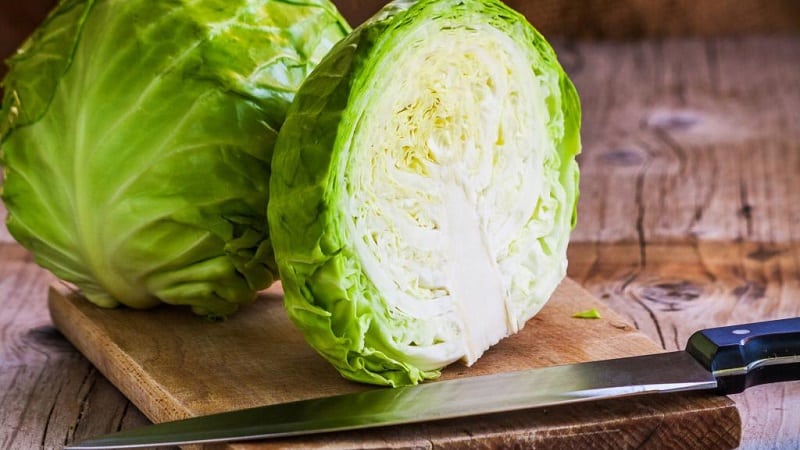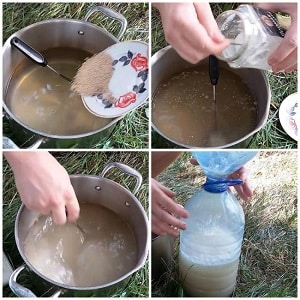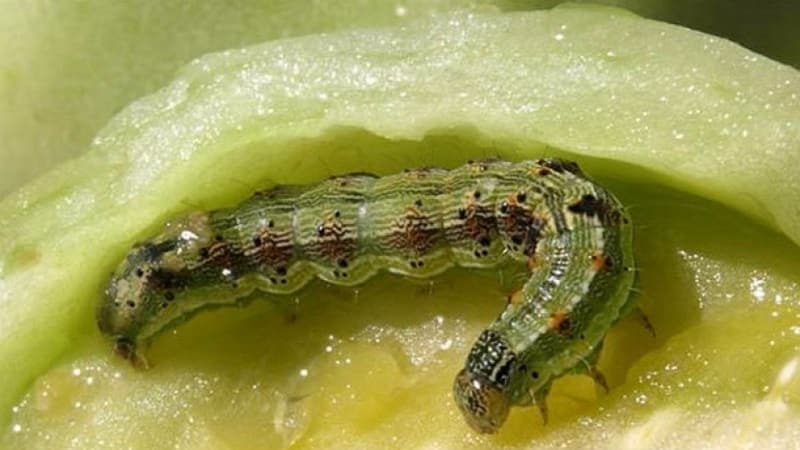Early ripening unpretentious variety of cabbage June
Ultra-early ripening June white cabbage is a great success. This is an old, time-tested variety. Gardeners have long loved it for its unpretentious care and excellent taste. What are the characteristics and features of the variety, how to grow a good harvest - read on.
Characteristics and description of the June cabbage variety
Visually, this variety is similar to other varieties of early-ripening cabbage, but it is not difficult for experienced farmers to distinguish it. June has not only its own taste, but also external characteristics, as well as very early ripening.
Origin and development
This is a cabbage variety of Soviet origin, bred by crossing at the All-Russian Research Institute in 1967.
To develop a new variety, Russian breeders crossed Number One Gribovsky 147 with Ditmarskaya early 2399 and some others. June was added to the state register of plants of the Russian Federation in 1971.
Chemical composition, trace elements and vitamins, beneficial properties
June is low-calorie - 27 kcal per 100 g. Contains vitamins A, K, C, PP, the entire group B, vitamin U, rarely found in nature. The composition also contains microelements: zinc, calcium, potassium, magnesium, iodine, iron, phosphorus. Pantothenic and folic acids add even more benefits to the vegetable.
Cabbage improves the body's immune defense, relieves inflammation, speeds up metabolism, and has a positive effect on the cardiovascular system.Useful for people with gout, kidney disease, coronary and cholelithiasis.
Features of application

Since the cabbage variety is early, this is manifested in the special tenderness of the leaves. Therefore, it is not suitable for pickling and salting. Most often, salads are made from it. It can also be used to prepare soups, borscht, vegetable side dishes, pie fillings, and so on.
Attention! It is better not to subject the June one to prolonged heat treatment.
Ripening period
The crop ripens already in June if seeds are sown for seedlings in early March or planted in the ground in early May. From the moment of planting seedlings and the appearance of seedlings until harvest, an average of 90-110 days pass.

Productivity
The early ripening variety Iyunskaya is extremely in demand in farming due to its good yield. You can collect 3-7 kilograms from 1 square. m. And if favorable conditions are provided, you can collect 9 kg. The yield will also increase if you feed the cabbage with special nutritional complexes. The size and weight of the head of cabbage is small, about 1 kg.
Disease resistance
June is moderately resistant to fungal diseases and pests. Clubroot, downy mildew, and blackleg are considered frequent diseases of this crop. However, they can be prevented if fungicidal preparations such as Planriz Thiram are used.
Cold resistance
June is resistant to night cold. The variety is capable endure frost down to -8°C without losing quality. Lower temperatures will harm the crop.
Appearance of leaves and heads of cabbage, taste
The heads of cabbage are formed by medium-sized green leaf plates (up to 15 cm in diameter). Leaves with a medium-wrinkled surface and small veins. The head of cabbage is loose and loose.When cut, the cabbage pulp is white-green in color.
The vegetable has a sweet and sour taste and a fresh aroma. If you boil, bake or fry it, it becomes sweet and tender.
Growing regions and climate requirements
June cabbage is recommended for growing in temperate and warm climatic conditions in the regions of central Russia. In general, this cabbage is well adapted to the domestic climate.
Advantages and disadvantages of the June variety
The variety is most valued for the following advantages:

- excellent taste;
- early ripening;
- good germination;
- good yield;
- crack resistance;
- valuable vitamin composition.
The main disadvantage of the variety is its average susceptibility to garden insect pests and fungal infections.
Difference from other varieties and hybrids
The main difference between the June variety is the early ripening period. Therefore, already at the beginning of summer you can supplement your diet with fresh cabbage.
Another difference is in agrotechnical requirements. Seedlings are sown and planted earlier than mid- and late-ripening varieties.
Features of planting and growing
Seeds are planted on seedlings to obtain healthy heads of cabbage in late February or early March. After two months, the plants are transplanted into open ground.
Preparing for landing
The soil mixture for sowing is prepared in the fall. To do this, mix peat, humus, sand and ordinary soil (1:1:1:1) from the garden.
Seed preparation
Before sowing, the seeds are heated in hot water +40°C for about 15 minutes. Those that have settled and floated are removed. After this, the seeds are immersed in cool water for five minutes.
Preparing seedlings
For strong seedlings, picking is carried out 1-2 weeks after emergence.Containers for seedlings, in order to reduce possible injuries to young roots, are 5x5 cm in size. In order for seedlings to grow and develop better, you can use fluorescent lamps, which illuminate the seedlings for 10-14 hours a day.
How to plant without seedlings
Sowing is best done in early spring, when the soil is well saturated with water due to rain. Sowing is done mechanically, using a vegetable seeder, or manually. After the seeds are sown in the holes, the soil is mulched with sawdust or humus.
Attention! For mechanized sowing, dry superphosphate should be added to the seeds. This will ensure uniform seeding throughout the garden and will have a positive effect on the formation of roots.
Soil requirements
The soil for sowing June cabbage is chosen the same as for other types of early ripening cabbage. The best option is soil with a fine lumpy structure with an acidity (pH) of 5.5-6.0.
Predecessors
The best predecessors for June are crops that were well fertilized. The early ripening variety Iyunskaya is best planted in beds where they were previously sown onion, potato, carrot, zucchini, peas, beans. The crop is not planted after other cabbages: rapeseed, radishes, horseradish, mustard, etc.

Dates, schemes and planting rules
Seedlings are planted in early March according to a 45×60 cm pattern. The planting density is usually indicated in the instructions of the seed manufacturer. To ensure optimal water-air balance, an inter-row cultivation procedure is carried out using cultivators to avoid injury to the crop. Finger tools are also used; they work not only between rows, but also the ground between plants. During cultivation, mineral fertilizers are applied.
Planting density and depth
The optimal sowing depth for grown June seedlings is 5-10 cm. The distance between neighboring plants in a row is from 40 to 60 cm.
Features of cultivation
To grow large and healthy cabbage heads, it is necessary to comply with all agrotechnical requirements: regularly weed and loosen the garden soil, feed the plants with various fertilizers and water them in a timely manner.
The variety is easy to care for, so following the simple recommendations of experienced farmers, you can reap an excellent harvest.
Watering mode
Water the cabbage once every 1-2 days. Water consumption is about 8 liters per 1 sq. m. The correct watering regime stimulates the full growth of the rosette. For irrigation, it is better to use settled or rainwater. During the growth of the rosette, water the soil moderately. If the soil is waterlogged, this will lead to stunted growth and possible death of the crop.
Loosening and hilling
The first loosening is carried out when the seedlings planted in open ground have grown and become stronger. Loosen with a hoe, a flat cutter, or a hand cultivator. The loosened holes are covered with earth, the surface of the bed is leveled, while the stems are left a little hilled up. The soil is loosened again at the end of May, and small mounds are made on the surface of the soil.
Top dressing

The first feeding is carried out 7-9 days after picking. To feed growing seedlings, make the following solution:
- potash fertilizers 2 g;
- ammonium nitrate 2 g;
- 4 g superphosphate;
- 1 liter of water.
After two weeks, the procedure is repeated, but a double portion of fertilizer is taken per 1 liter of water. The third time the nutritional composition is applied shortly before planting the seedlings in the garden. For 1 liter of water take 3 g of ammonium nitrate, 8 g of potassium compound, 5 g of superphosphate.
Important! For better development of cabbage heads, you can add rotted manure to the soil.
Measures to increase yield
To increase the yield of June, it is recommended to purchase high-quality seeds, choose optimal soil with low acidity and carry out the necessary agrotechnical measures in a timely manner: watering, loosening, hilling the soil, applying special fertilizers.
Disease and pest control

June cabbage can be affected by common fungal diseases such as blackleg and clubroot. Having identified the first signs of the disease, remove the affected plants and add a solution of copper sulfate to the soil for disinfection.
Among insects, June cabbage is often affected by cruciferous bugs, aphids, flea beetles, and caterpillars of cabbage butterflies.
Important! Early ripening cabbage varieties cannot be treated with insecticides. An effective alternative to insecticides will be folk remedies: tobacco dust and an aqueous solution of liquid soap, which is sprayed on plants.
Difficulties in growing
If all agricultural requirements are met, growing June is not a troublesome task. This cabbage can be affected by fungus and garden insects, which can be easily corrected with the help of special biological products “Planriz Tirama” and “Baktofit”.
Harvest and storage
It is necessary to strictly follow certain rules and comply with agrotechnical requirements in order to properly harvest and ensure long-term storage of vegetables.
How and when to collect
Cabbage is harvested in June, on sunny and dry days. The heads of cabbage are carefully dug up without cutting off the heads, and the roots and stalks are cleared of soil. Substandard heads of cabbage are sorted and removed. The upper damaged leaf blades of suitable heads of cabbage are also removed.
Storage features and keeping quality of the June variety
Before storing cabbage, the heads of cabbage are dried for about 4 hours under a canopy that protects them from sun and rain. Cabbage is stored in a layer of no more than four medium heads. The shelf life of June is up to three months.
Tips and reviews from experienced gardeners
Reviews about the variety are positive; gardeners note easy care and productivity.
Tamara, Moscow: “Excellent early cabbage, never caused any difficulties. The main thing is high-quality seeds and a warm spring. Medium-sized cabbage, very tasty, I use it fresh.”
Rostislav, Voronezh: “The best variety of early ripening cabbage, I plant it every year using seedlings only, and it has never failed. Very tasty".
Conclusion
It is not for nothing that June has been considered the most popular early ripening variety for decades. Easy care, early ripening, good composition are its main advantages.